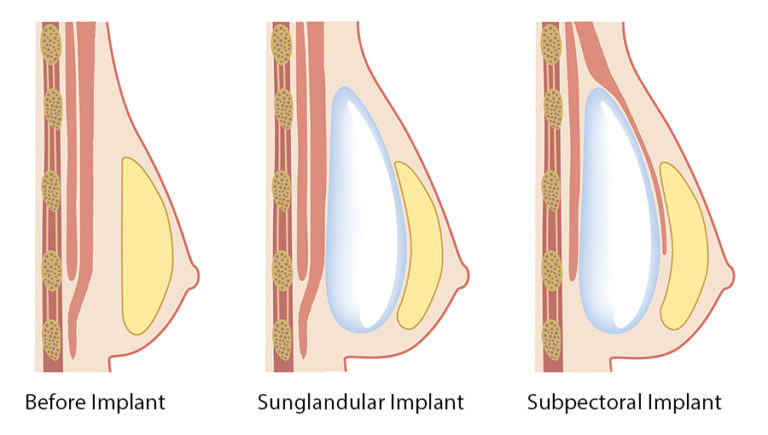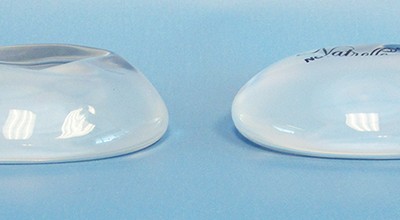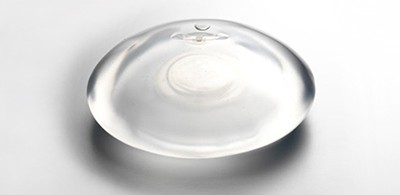
Breast Implant Pocket Location
There Are Three Pocket Locations For Breast Implant Placement
The layers of tissue on the chest, in the region of the breast, are as follows (superficial to deep): skin, subcutaneous fat, breast tissue, the fascia of the pectoralis muscle, pectoralis muscle, and rib. Once the skin incision is made, the surgeon creates a pocket into which the implant is inserted. The pocket can be created in one of three locations.
A subglandular pocket is created directly behind the breast tissue so the implant is positioned in front of the muscle. In a subglandular position the implant occupies the space between the breast tissue and the pectoralis muscle fascia. Subglandular implant placement is a less painful operation. This pocket allows more direct interaction between the implant and the breast tissue; and in situations where there is a mild amount of drooping a subglandular implant may achieve better “filling” of the breast-skin envelope. There is less tissue thickness covering the implant (the breast implant is covered only by skin, subcutaneous tissue, and breast tissue) in this location so rippling may be more prominent. A subglandular pocket is associated with a higher incidence of capsular contracture.
The pectoralis muscle fascia is a thin connective tissue layer that envelopes the muscle. A subfascial pocket is created behind the pectoralis muscle fascia so the implant is positioned in front of the muscle. In a subfascial position the implant is placed between the fascia of the pectoralis muscle and the muscle itself. The fascia adds only a very thin layer of additional tissue coverage over the implant when compared to a subglandular pocket. Some surgeons believe this makes a difference while others do not.

A subpectoral (submuscular) pocket is created beneath the pectoralis major muscle so the implant is positioned above the rib cage. For a primary breast augmentation, the terms “subpectoral” or “submuscular” generally refer to a dual-plane technique, and not full muscle coverage. In this subpectoral (dual-plane) position, even though the implant is only partially covered by muscle, the muscle provides an extra tissue layer to help conceal the implant and its margins. Many women seeking augmentation require this muscle tissue coverage for a more satisfactory result. The submuscular space is associated with less (visible and palpable) implant rippling, has a lower incidence of capsular contracture, and provides for better imaging of the breast during mammography. Creation of a subpectoral pocket is a bit more painful and results in more swelling , so the recovery is a few weeks longer.
Saline-filled breast implants should only be placed below the muscle to help conceal the unsatisfactory characteristics that saline exhibits as a fill material. Silicone gel-filled implants may be placed in a subglandular, subfascial, or submuscular position because of the softer more natural characteristics of silicone gel as a fill material. For the majority of women a subpectoral pocket is the best option because it provides greater tissue covering over the breast implant and a lower rate of capsular contracture.
NEXT TOPIC: Selecting Breast Implants Properly
What is the Gel-to-Shell Fill Volume Ratio?
Each round silicone gel-filled breast implant is comprised of a silicone elastomer shell which contains the silicone gel filling. Silicone gel breast implants are filled by the manufacturer with a moderately cohesive (responsive) silicone gel. If you look carefully at...
How Firm is a Saline Breast Implant?
During the consultation today, a patient asked me, "Aren't saline implants harder?" Well, it actually depends. Let me start by saying that if you have ever held a saline implant and a silicone gel implant side-by-side, you know that they feel completely different, and...
Do I need to change my breast implants after 10 years?
During breast augmentation consultations women frequently make a comment, or ask a question, about having to change their breast implants every 10 years. The comment or question is usually worded in such a way that they have the understanding that breast implants need...


